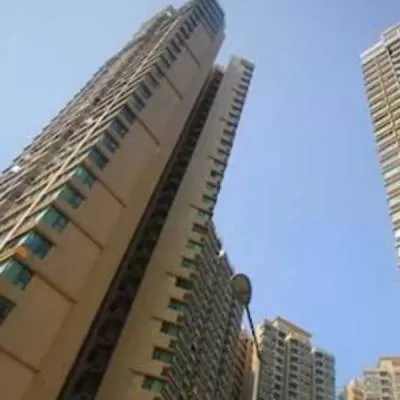- Home
- Real Estate
- Tier-II and Tier-III cities stage their real estate comeback
Tier-II and Tier-III cities stage their real estate comeback
What lies beneath
The ticket sizes for residential properties in Tier-II and Tier-III cities and towns start from a significantly lower base, owing to cheaper land prices and also the fact that developers active there are more aligned with affordability. Buyers tend to be more cost-sensitive as economic drivers in the city may not be on par with those in the larger cities. Also, under the incumbent government, many of these cities are now seeing significant infrastructure deployment. Quite a few have come under the Smart Cities programme, which bodes well for their real estate markets.
With increasing demand, one can expect prices in these cities and towns to assume a gradual upward trajectory. Price growth will be higher and faster in cities coming under the Smart Cities programme. This would indicate that intending buyers should not delay their purchase decisions indefinitely, since the lower existing base currently provides the ideal entry point, especially for price-sensitive buyers.
Whether a smaller city offers good options for investment depends on what economic drivers are already in place and which are expected in the short-to-mid-term. Definitely, accelerated infrastructure activity in a particular city or town indicates that price growth will be healthy going forward. Investors need to study each market for its growth prospects, including rental demand and capital appreciation trends as well as expected employment growth. A number of larger players have now expanded into Tier-II and Tier-III cities on the back of increasing demand for quality residential offerings there.
Investors’ approach
Investors will always be driven by investment rationale, as well as their own knowledge and preference of some markets over others. Investors with better capitalization may wish to focus on the larger cities, depending on their risk appetite, while others would be more interested in India's reviving Tier II/III story. Not all Tier-II and Tier-III cities are performing uniformly well, though it is true that supply will generally follow demand. In other words, cities which are performing well economically will attract more migrant population which will need rental housing.
Simultaneously, local home buyer sentiment will also be higher in such a city. Both investors and end-users would have a very decent inventory to choose from, which enables them to fine-tune their final choices according to location, amenities and ticket sizes. At the end of the day, end-users will purchase homes in their cities of residence – or, in the case, of NRIs, in their cities of origin. Investors obviously have a much larger playing field.
Listed below are a few smaller cities where residential property prices are significantly lower than in the top cities. These cities also hold considerable growth potential due to their key growth drivers:
Demand drivers:
Ahmedabad: Massive presence of home-grown firms and businesses, favourable business ecosystem. Average residential real estate prices: Rs 3,500-4,900 per sq ft.
Indore: Government support, good IT policy leading to the growth of the IT and ITeS industry. Average residential real estate prices: Rs 2,500-3,800 per sq ft.
Coimbatore: Significant talent pool, enterprising community. Average residential real estate prices: Rs 3,200-5,000 per sq ft.
Chandigarh: High literacy rate, favourable business environment. Average residential real estate prices: Rs 5,000-7,000 per sq ft.
Jaipur: A key IT and ITeS destination, a planned city. Average residential real estate prices: Rs 3,000-4,000 per sq ft.
Kochi: Good talent pool, favourable business environment, massive NRI investments. Average residential real estate prices: Rs 3,500-4,800 per sq ft.
About the Author:
Anuj Puri is Chairman at Anarock Property Consultants.
After a protracted period where interest for real estate investment was concentrated primarily in the larger cities, we are now seeing a resurgence of the Tier-II and Tier-III cities story in India. Many of these cities are seeing increasing economic activity and infrastructure growth, to some extent reducing the outward migration to the metros. This is a welcome dynamic which will eventually result in a more uniform spread of real estate demand across the country, and reduce the pressure on the larger cities. What lies beneath The ticket sizes for residential properties in Tier-II and Tier-III cities and towns start from a significantly lower base, owing to cheaper land prices and also the fact that developers active there are more aligned with affordability. Buyers tend to be more cost-sensitive as economic drivers in the city may not be on par with those in the larger cities. Also, under the incumbent government, many of these cities are now seeing significant infrastructure deployment. Quite a few have come under the Smart Cities programme, which bodes well for their real estate markets. With increasing demand, one can expect prices in these cities and towns to assume a gradual upward trajectory. Price growth will be higher and faster in cities coming under the Smart Cities programme. This would indicate that intending buyers should not delay their purchase decisions indefinitely, since the lower existing base currently provides the ideal entry point, especially for price-sensitive buyers. Whether a smaller city offers good options for investment depends on what economic drivers are already in place and which are expected in the short-to-mid-term. Definitely, accelerated infrastructure activity in a particular city or town indicates that price growth will be healthy going forward. Investors need to study each market for its growth prospects, including rental demand and capital appreciation trends as well as expected employment growth. A number of larger players have now expanded into Tier-II and Tier-III cities on the back of increasing demand for quality residential offerings there. Investors’ approach Investors will always be driven by investment rationale, as well as their own knowledge and preference of some markets over others. Investors with better capitalization may wish to focus on the larger cities, depending on their risk appetite, while others would be more interested in India's reviving Tier II/III story. Not all Tier-II and Tier-III cities are performing uniformly well, though it is true that supply will generally follow demand. In other words, cities which are performing well economically will attract more migrant population which will need rental housing. Simultaneously, local home buyer sentiment will also be higher in such a city. Both investors and end-users would have a very decent inventory to choose from, which enables them to fine-tune their final choices according to location, amenities and ticket sizes. At the end of the day, end-users will purchase homes in their cities of residence – or, in the case, of NRIs, in their cities of origin. Investors obviously have a much larger playing field. Listed below are a few smaller cities where residential property prices are significantly lower than in the top cities. These cities also hold considerable growth potential due to their key growth drivers: Demand drivers: Ahmedabad: Massive presence of home-grown firms and businesses, favourable business ecosystem. Average residential real estate prices: Rs 3,500-4,900 per sq ft. Indore: Government support, good IT policy leading to the growth of the IT and ITeS industry. Average residential real estate prices: Rs 2,500-3,800 per sq ft. Coimbatore: Significant talent pool, enterprising community. Average residential real estate prices: Rs 3,200-5,000 per sq ft. Chandigarh: High literacy rate, favourable business environment. Average residential real estate prices: Rs 5,000-7,000 per sq ft. Jaipur: A key IT and ITeS destination, a planned city. Average residential real estate prices: Rs 3,000-4,000 per sq ft. Kochi: Good talent pool, favourable business environment, massive NRI investments. Average residential real estate prices: Rs 3,500-4,800 per sq ft. About the Author: Anuj Puri is Chairman at Anarock Property Consultants.





















